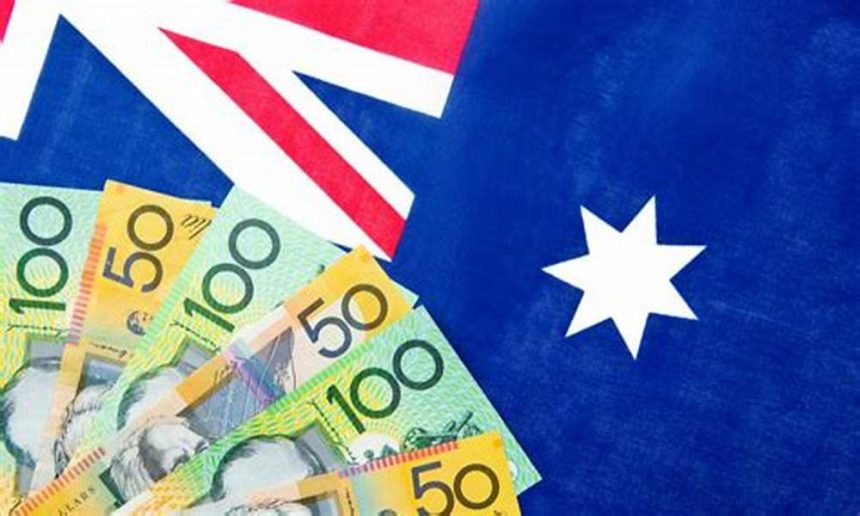Australian dollar strengthened following the announcement of Australian labor numbers on Thursday.
The Australian Dollar (AUD) ended its three-day losing skid against the US Dollar (USD) after a good Australian employment data was announced on Thursday.
Australia’s employment change grew by 64.1K, bringing total employment to a new record of 14.52 million.
The seasonally adjusted Employment Change in Australia increased by 64.1K in September, bringing total employment to a record 14.52 million. This significantly above market forecasts of a 25.0K increase, following a revised rise of 42.6K in the preceding month.
Meanwhile, Australia’s seasonally adjusted unemployment rate stayed unchanged at 4.1% in September, matching the revised figure for August and falling short of the expected 4.2%. The number of unemployed people declined by 9.2K, to 615,700.
Strong labor and inflation figures have supported the US Dollar (USD), tempering expectations for rapid easing by the Federal Reserve.
Traders anticipate the US Retail Sales report, which expected to climb by 0.3% MoM in September, up from 0.1% the previous month.
Traders are eagerly expecting the US Retail Sales data, which will be issue later in the North American session. Monthly consumer expenditure expected to climb by 0.3% in September, up from 0.1% in the previous reading.
Daily Digest Market Movers: Australian Dollar Gains Ground After Strong Employment Data.
According to the CME FedWatch Tool, there is now a 92.1 percent The likelihood of a 25-basis-point rate drop in November, with no prospect of a greater 50-basis-point reduction.
During a property market conference on Thursday, China’s Housing Minister revealed plans to launch one million village urbanization projects. The government plans to expand the list of authorized projects and raise bank credit to 4 trillion Yuan. According to Bloomberg, the minister stated that property limitations will be determined by individual towns depending on their economic conditions and local property market scenarios.
Reserve Bank of Australia (RBA) Deputy Governor Sarah Hunter emphasized the central bank’s commitment to containing inflation.
On Wednesday, Reserve Bank of Australia (RBA) Deputy Governor Sarah Hunter emphasized the central bank’s commitment to containing inflation, emphasizing that, while inflation expectations remain well-anchored, persistent price pressures continue to pose major challenges.
On Tuesday, Federal Reserve Bank of Atlanta President Raphael Bostic stated: indicated he expects only one more interest rate decrease of 25 basis points this year, as reflected in his predictions at last month’s US central bank meeting. “The median forecast was for 50 basis points more than the 50 basis points already implemented in September.” My expectation was for an additional 25 basis points,” he told Reuters.
The Australian weekly Consumer Confidence poll showed little fluctuation, with the ANZ-Roy Morgan Consumer Confidence index holding unchanged at 83.4 this week. Despite the steady level, the longer-term trend indicates that Consumer Confidence has been below 85.0 for 89 straight weeks. The current value is 1.3 points above the 2024 weekly average of 82.1.
Neel Kashkari, president of the Federal Reserve Bank of Minneapolis calmed investors on Monday by confirming the Fed’s data-driven approach. Kashkari echoed common Fed policymaker views on the robustness of the US economy, citing continuous softening of inflationary pressures and a strong labor market, despite a recent increase in the total unemployment rate, according to Reuters.
The Commonwealth Bank of Australia predicted that the Reserve Bank of Australia would undertake a 25 basis point rate decrease by the end of 2024.
The Commonwealth Bank of Australia predicted that the Reserve Bank of Australia would undertake a 25 basis point rate decrease by the end of 2024. The research highlighted that a larger disinflationary trend than the RBA anticipated is required for the Board to consider lowering policy this calendar year.
The National Bureau of Statistics of China stated that the country’s monthly Consumer Price Index (CPI) stayed constant at 0% in September, down from a 0.4% gain in August. The annual The inflation rate increased by 0.4%, falling short of the expected 0.6%. Furthermore, the Producer Price Index (PPI) fell by 2.8% year on year, more than the prior reduction of 1.8% and above estimates of a 2.5% drop.









